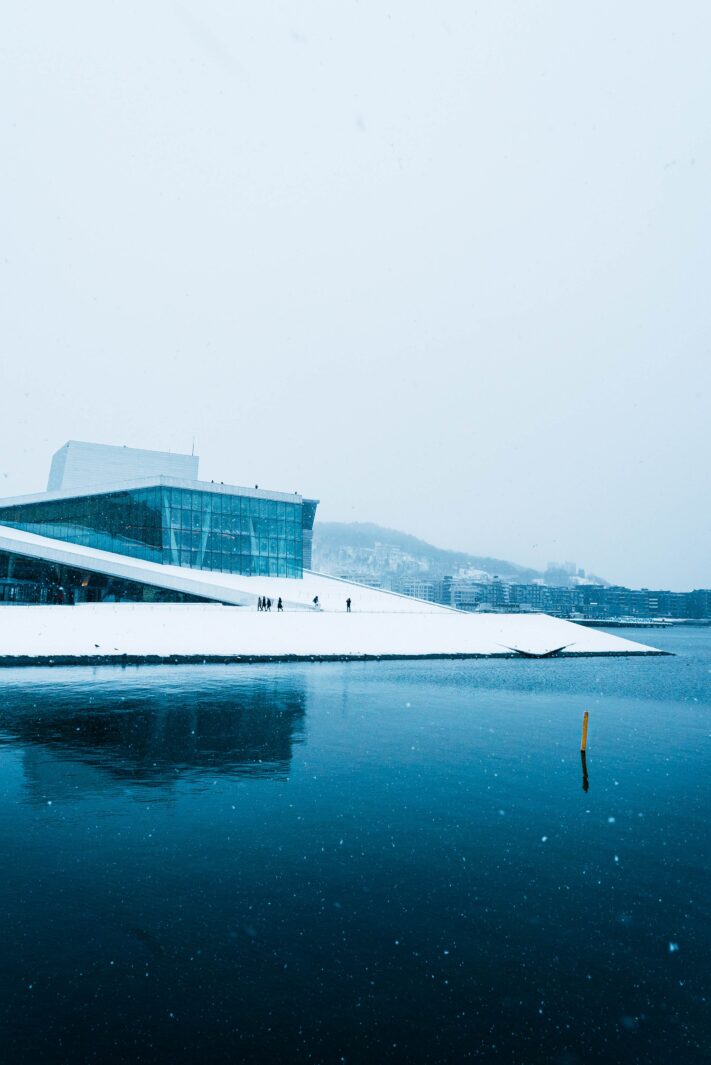The National Opera House of Norway is located in the center of Oslo. The theater was built with state budget funds and is an institution run by the Norwegian government. It is the largest public building built in Norway since the construction of Nidaros Cathedral (around 1300).
The building of the opera house approaches the very shore of the Oslofjord and even steps into the water a little. Its most striking and outstanding feature is the exploited roof of a large area, inclined towards the water. This roof is assembled from 36 thousand snow-white stone slabs, adjusted in such a way that anyone can climb the ramps from the coast to the highest point of the building, from which a magnificent panorama of the city and the bay opens. Plates have different textures – smooth in inaccessible places and rough-relief where people go up or down. The Italian marble from which the slabs are made, being a traditional material for sculpture, gives the building a monumentality; and the changing slope of the slabs, coupled with their different processing, gives rise to a changeable play of light and shadow, enriching the architectural forms with volumetric expressiveness.

The sloping roof of the theater, which slopes down to the ground, has become a new word in architecture. She quickly gained popularity among the citizens and guests of Oslo. Only in the first eight months after the opening of the theater, 800 thousand people walked along it. Skateboarders also took a liking to the roof of the theater.